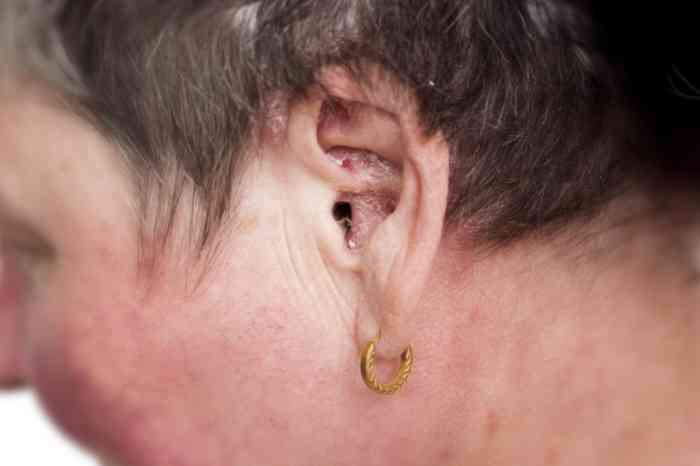Need support?
Call us and get support from one of our advisors.
Call for Free 877-403-8834

Perichondritis is a serious ear condition that shouldn’t be overlooked. Learn about its causes, symptoms, and treatment options. If you're experiencing ear pain or swelling, visit a healthcare provider.
Perichondritis is an infection in the lining of your outer ear, called the perichondrium. This condition — sometimes known as auricular perichondritis — only occurs in the upper part of the ear, as opposed to the earlobe, due to the layered anatomy of your ear.
Think of the cartilage as the middle layer: this is the firm but flexible tissue that gives your ears their shape. On top of the cartilage is the perichondrium, a layer of connective tissue that carries blood and nutrients to the cartilage to keep it healthy. Your skin is the final, outer layer.
Earlobes are a bit different; there’s no cartilage or perichondrium covering them. So, perichondritis doesn’t happen in the earlobes because there is no perichondrium in that part of the ear.
Chondritis, like perichondritis, is also an infection, but it only affects the cartilage, not the lining surrounding it. When it occurs specifically in the ear, doctors may refer to it as “auricular chondritis” (auricular means “outer ear”), to differentiate it from chondritis in other parts of the body.
Perichondritis causes all trace back to an ear injury that lets in bacteria. Different types of bacteria can cause perichondritis, but cuts, scratches, punctures or burns make it possible for the bacteria to invade your ear. Some common sources of injuries that lead to perichondritis include:
Common auricular perichondritis symptoms include:
In some cases of perichondritis, abscesses can also develop. These are pockets of pus that form under the skin and sometimes drain fluid.
Perichondritis treatment will depend on the kind of bacteria causing the infection as well as the severity of the infection, but it typically includes taking an antibiotic. Your doctor will examine you and perform tests to determine the right course of action.
Many health conditions have similar symptoms that can be hard to tell apart. Doctors have to consider all of the possibilities and rule them out to land on the right answer — this is called “differential diagnosis”. In the case of perichondritis, differential diagnosis conditions2 can include:
Let’s take a closer look at the differences between perichondritis and other conditions that often look like it.
The potential complications of perichondritis are the reason why it’s so important to get it treated fast. If left untreated, the infection can cut off the flow of blood and nutrients that keep the ear cartilage healthy. Without that, the tissue can die. Dead tissue may become deformed due to scar tissue (cauliflower ear) or need to be surgically removed. Ear deformity can lead to hearing problems such as conductive hearing loss.
Pediatric perichondritis generally has the same symptoms and complications as in adults. However, your child might also have a fever in addition to a sore, red and swollen ear. If you notice these symptoms, see a doctor as soon as possible to prevent tissue damage that could affect their health and hearing.
While it’s not 100 percent possible to prevent perichondritis — it can happen due to accidental scrapes and injuries — there are things you can avoid or protect yourself from. When playing contact sports, wear ear protection. It’s also safer to avoid puncturing of the upper ear, either through acupuncture or piercings.
1 Forozidou E, Poutoglidis A, Tsetsos N, Kilmpasanis A, Fyrmpas G. Surgery as a Last Resort for Persistent Auricular Perichondritis. Ear Nose Throat J. 2024 Feb;103(2):81-83. doi: 10.1177/01455613211038343. Epub 2021 Aug 10. PMID: 34375535.
2 Khan N, Saleh HM, Hohman MH, et al. Pinna Perichondritis. [Updated 2024 May 1]. In: StatPearls [Internet]. Treasure Island (FL): StatPearls Publishing; 2025 Jan-. Available from: https://www.ncbi.nlm.nih.gov/books/NBK572081/.



